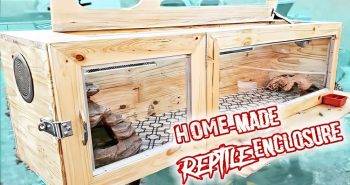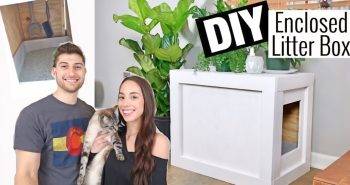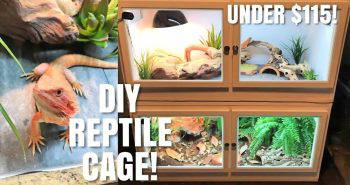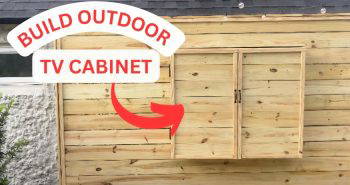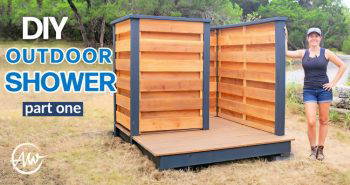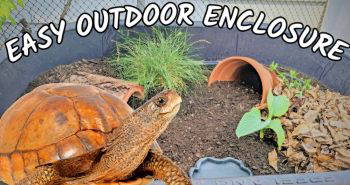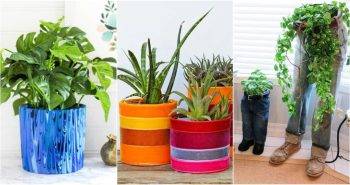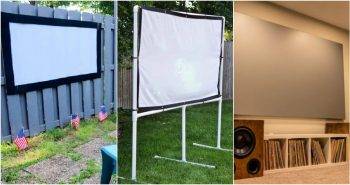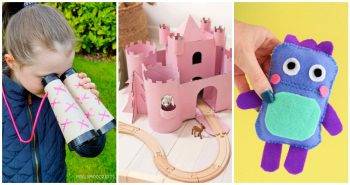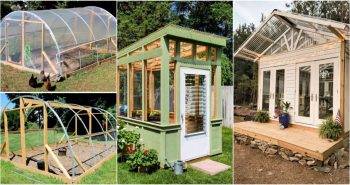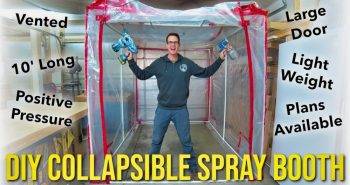Building a DIY snake enclosure can feel like a big task, but with the right approach, it's completely doable. I remember when I started working on my snake's home; I wanted it to be safe, comfortable, and functional. It didn't take long before I realized how rewarding the process could be. With simple materials and a bit of effort, I was able to build a space my snake would love.
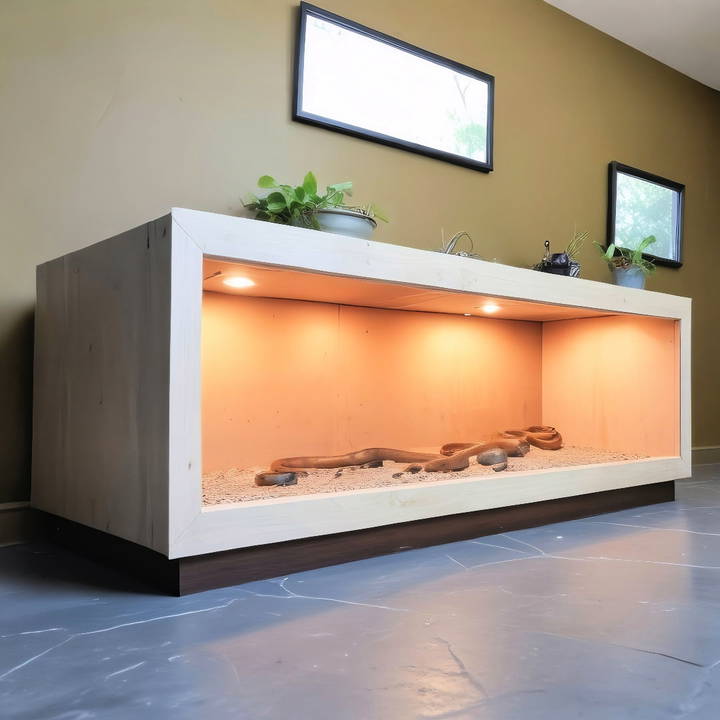
As I went along, I learned a lot about what works best for a snake's needs, like the right temperature control and ventilation. With the information I'm about to share, you can do the same. Building a snake enclosure yourself doesn't just save money; it lets you build something truly special for your pet. I'm helping with this guide to make sure your snake has the best home possible.
By following these steps, you'll see how easy it is to build the ideal habitat for your snake. It's a great way to get hands-on, and your snake will thank you!
Understanding Your Snake's Needs
When making a home for your snake, it's essential to understand that each species has unique requirements that must be met to ensure their health and happiness. Here's a straightforward guide to understanding your snake's needs:
Space
Snakes need room to move, so choose an enclosure that allows your snake to stretch out fully. A good rule of thumb is that the enclosure should be at least as long as the snake and half as wide as the snake is long.
Temperature
Snakes are ectothermic, meaning they rely on their environment to regulate their body temperature. Provide a temperature gradient in the enclosure with a warm side and a cool side. This allows the snake to self-regulate its body temperature by moving between the areas.
Humidity
Humidity levels are crucial for snakes, especially when shedding. Research your snake species to find the ideal humidity range and maintain it using a hygrometer. You can increase humidity with misting, water bowls, or humidity boxes.
Lighting
While snakes don't require UVB light to metabolize calcium like some reptiles, a natural light cycle helps regulate their day and night rhythms. Use a timer to mimic natural daylight hours.
Security
Snakes are escape artists, so a secure lid is non-negotiable. Ensure there are no gaps and the lid is well-ventilated.
Substrate
The floor covering, or substrate, should be easy to clean and safe for your snake. Newspaper, aspen shavings, and reptile carpets are popular choices. Avoid cedar or pine, as they can be toxic to snakes.
Enrichment
Provide hiding spots, climbing branches, and other enrichment to stimulate your snake's natural behaviors and provide a sense of security.
By following these tips, you'll make a cozy, engaging home for your snake. A happy snake equals a healthy snake. Understanding their needs leads to a more enjoyable experience for you both. Keep it simple, and your snake will flourish!
Materials Needed and Their Purpose
Before diving into the assembly process, let's talk about the materials you will need. This part is crucial as the right materials will not only make the job easier but also ensure the durability and safety of your enclosure.
- PVC Sheets: Essential for the structure's walls due to their durability and ease of cleaning.
- Circular Saw or Jigsaw: To cut the PVC sheets accurately according to the measurements.
- Drill: For assembling the pieces together securely.
- Screws: To hold the structure together.
- Silicone Caulk: To seal edges and ensure the enclosure is watertight and escape-proof.
- Plexiglass: For the front sliding doors, providing a clear view inside the enclosure.
- Aluminum U-Channel: To support the Plexiglass doors and allow them to slide open easily.
- Ventilation Grids: To ensure proper airflow within the enclosure.
- Heat Tape: For making a suitable thermal gradient for your snake's comfort and health.
- LED Lighting: To illuminate the enclosure without generating excessive heat.
Step by Step Instructions
Build a custom DIY snake enclosure with our step-by-step guide. From cutting materials to adding final touches, build your snake's perfect habitat.
Step 1: Cutting Your Materials to Size
Begin by marking your PVC sheets according to the dimensions of your enclosure. My goal was to build an 8-foot enclosure, so adjustments might be needed based on your specific needs. Use a circular saw or jigsaw to cut the PVC sheets for the sides, top, bottom, and back of the enclosure. Remember, precision is key here to ensure all pieces fit together smoothly.
Step 2: Assembling the Structure
Once all your pieces are cut to size, use a drill to secure the sides, top, bottom, and back together with screws. It's like putting together a large, 3D puzzle. I found that starting with the sides and back, then adding the bottom and top last, worked best for ensuring stability.
Step 3: Sealing the Edges
With the structure assembled, the next step is to apply silicone caulk along all the internal seams. This step ensures that the enclosure is watertight and escape-proof. It's a messy but necessary step for the overall integrity of your enclosure.
Step 4: Installing the Sliding Doors
This part can be a bit tricky. You'll need to fix the aluminum U-channel to the front of your enclosure at the top and bottom, where your Plexiglass doors will slide. I made sure to measure the channels accurately for the doors to fit snugly yet slide open easily.
Step 5: Ventilation
Proper ventilation is crucial for a healthy snake environment. I used a drill to build ventilation holes on the top and sides of the enclosure. It's better to start with fewer holes and add more if needed after monitoring the humidity levels within the enclosure.
Step 6: Adding Heat and Light
Installing the heat tape and LED lighting comes next. For the heat tape, placement depends on your specific species' needs, but I placed mine towards one side of the enclosure to build a thermal gradient. The LED lighting was mounted on the ceiling of the enclosure, casting light evenly without heating the interior too much.
Step 7: The Final Touches
The last step involved adding substrate, decorations, and ensuring all features worked as they should. The sliding doors needed a bit of adjustment to slide smoothly, and I double-checked all sealed edges and ventilation holes.
Customization Ideas
Designing a snake enclosure is more than functionality; it shows care for your snake's needs. Consider these ideas to make the habitat cozy and stimulating:
Choose a Theme
Select a theme that mimics your snake's natural environment. Whether it's a desert, tropical, or woodland theme, use safe, non-toxic materials to rebuild elements from these habitats.
Add Plants
Incorporate live or artificial plants to provide cover and enhance the enclosure's aesthetics. Live plants can also help maintain humidity levels.
Build Hiding Spots
Snakes need privacy. Use cork bark, hollow logs, or commercial hide boxes to build multiple hiding spots.
Install Climbing Branches
Especially for arboreal species, branches and shelves offer necessary exercise and enrichment opportunities.
Use Safe Substrates
Choose substrates like coconut fiber or aspen shavings that are safe for your snake and easy to clean.
Consider Lighting
Soft lighting can highlight the beauty of your snake and its habitat. Ensure any lights used don't emit heat or alter the enclosure's temperature.
Think About Viewing
Design the enclosure with viewing in mind. Place decorations strategically so you can observe your snake without disturbing it.
Safety First
Ensure all custom features are secure and won't collapse or cause harm to your snake.
Incorporate these ideas to build a safe, healthy snake habitat that's also a delightful home addition. Prioritize your snake's comfort and well-being while letting your creativity flourish.
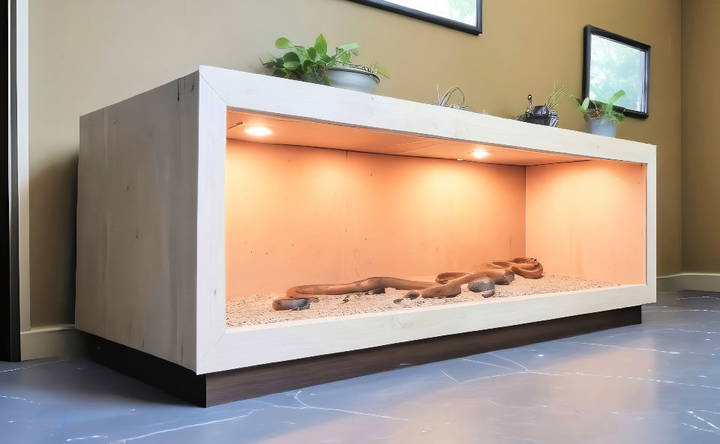
Troubleshooting Common Issues
Building a DIY snake enclosure can have some hiccups. Here's a guide to troubleshoot common issues for a safe and comfy home.
Escapes
Snakes are notorious escape artists. To prevent escapes, ensure all enclosure openings are secure. Check for gaps or loose lids and use locks if necessary.
Improper Heating
Snakes require a specific temperature range to thrive. If your enclosure is too cold or too hot, it can be dangerous for your pet. Use thermostats to maintain consistent temperatures and regularly check that heating elements are functioning correctly.
Inadequate Hiding Spots
Snakes need hiding places to feel secure. If your enclosure lacks sufficient hiding spots, your snake may become stressed. Add more hide boxes or plants to provide ample cover.
Humidity Issues
Maintaining the right humidity is crucial for snakes, especially during shedding. If the air is too dry, consider adding a larger water bowl or misting the enclosure. If it's too humid, improve ventilation.
Health Problems
If your snake shows signs of ill health, such as lethargy or refusal to eat, consult a veterinarian. Ensure the enclosure's environment meets all of your snake's needs, as environmental stress can lead to health issues.
Fixing these issues ensures a safe, stress-free environment for your snake. To prevent problems, regularly check and maintain the enclosure.
Safety Tips for DIY Construction
Building a DIY snake enclosure can be a rewarding project, but safety should always be your top priority. Here are some safety tips to ensure that both you and your snake remain safe during the construction process:
Work in a Well-Ventilated Area
When using adhesives, paints, or sealants, work in an area with good airflow to avoid inhaling fumes.
Wear Protective Gear
Always wear safety glasses to protect your eyes from dust and debris. Gloves can protect your hands when handling rough materials or when using tools.
Use Tools Properly
Familiarize yourself with the correct operation of power tools before starting. Always follow the manufacturer's instructions and use guards on saws and drills.
Secure Materials
Make sure all wood, glass, and other materials are securely clamped or held in place before cutting or drilling to prevent slips and accidents.
Check for Sharp Edges
After cutting materials, check for and smooth out any sharp edges or splinters that could harm you or your snake.
Keep a Clean Workspace
A tidy workspace helps prevent tripping over tools or materials. Clean up spills immediately to avoid slips.
Measure Twice, Cut Once
Double-check your measurements before making cuts to avoid mistakes and waste of materials.
Plan for Emergencies
Keep a first aid kit nearby in case of minor injuries, and know how to quickly turn off all tools if needed.
Inspect Your Enclosure
Once the enclosure is built, inspect it thoroughly for any potential hazards like loose wires or sharp fittings.
By following these safety tips, you'll build a secure and sturdy home for your snake while keeping yourself safe during the DIY process.
FAQs About DIY Snake Enclosure
Discover essential FAQs about DIY snake enclosures, covering safety, materials, and design tips for making the perfect habitat for your pet snakes.
Safety and security are paramount. Make sure the enclosure has a secure lid with locks or latches that your snake can’t open. The enclosure should be well-ventilated but without large gaps. Regularly inspect for any sharp edges or loose components that could harm your snake. If you’re using wood, ensure it’s properly sealed to prevent moisture damage.
The size of the enclosure depends on the species and size of your snake. As a general rule, the enclosure should be at least as long as the snake and half as wide as the snake’s length. This allows enough room for the snake to move around comfortably. Remember, larger snakes or active species may require more space.
Building the right environment involves providing proper heating, lighting, and substrate. Install a heat source like a heat mat or lamp and use a thermostat to regulate the temperature. UVB lighting can mimic natural sunlight. Choose a substrate that suits your snake's natural habitat, and avoid substrates that can cause impaction. Add hides, branches, and decorations to build a stimulating environment.
Regular cleaning is essential to prevent the buildup of bacteria and odors. Spot clean daily to remove waste and uneaten food. Perform a deep clean once a month by removing and replacing the substrate, disinfecting the enclosure, and washing all decorations. Always provide fresh water and maintain proper humidity levels for your snake’s health.
Maintaining the correct humidity level is crucial for your snake's health, especially during shedding. Use a hygrometer to monitor humidity levels. To increase humidity, you can mist the enclosure with water, add a larger water bowl, or include moisture-retaining substrates like coconut fiber or sphagnum moss. For species requiring lower humidity, ensure good ventilation and use substrates like aspen shavings that don't retain much moisture. Remember to adjust your methods according to the specific needs of your snake species.
Conclusion
In conclusion, building a DIY snake enclosure is not only cost-effective but also rewarding. With the right materials and steps, you can build a comfortable and safe home for your snake. This guide will help you provide the best environment for your pet, ensuring their health and happiness. Take your time, follow the instructions, and soon you'll have a custom-built space your snake will thrive in.


